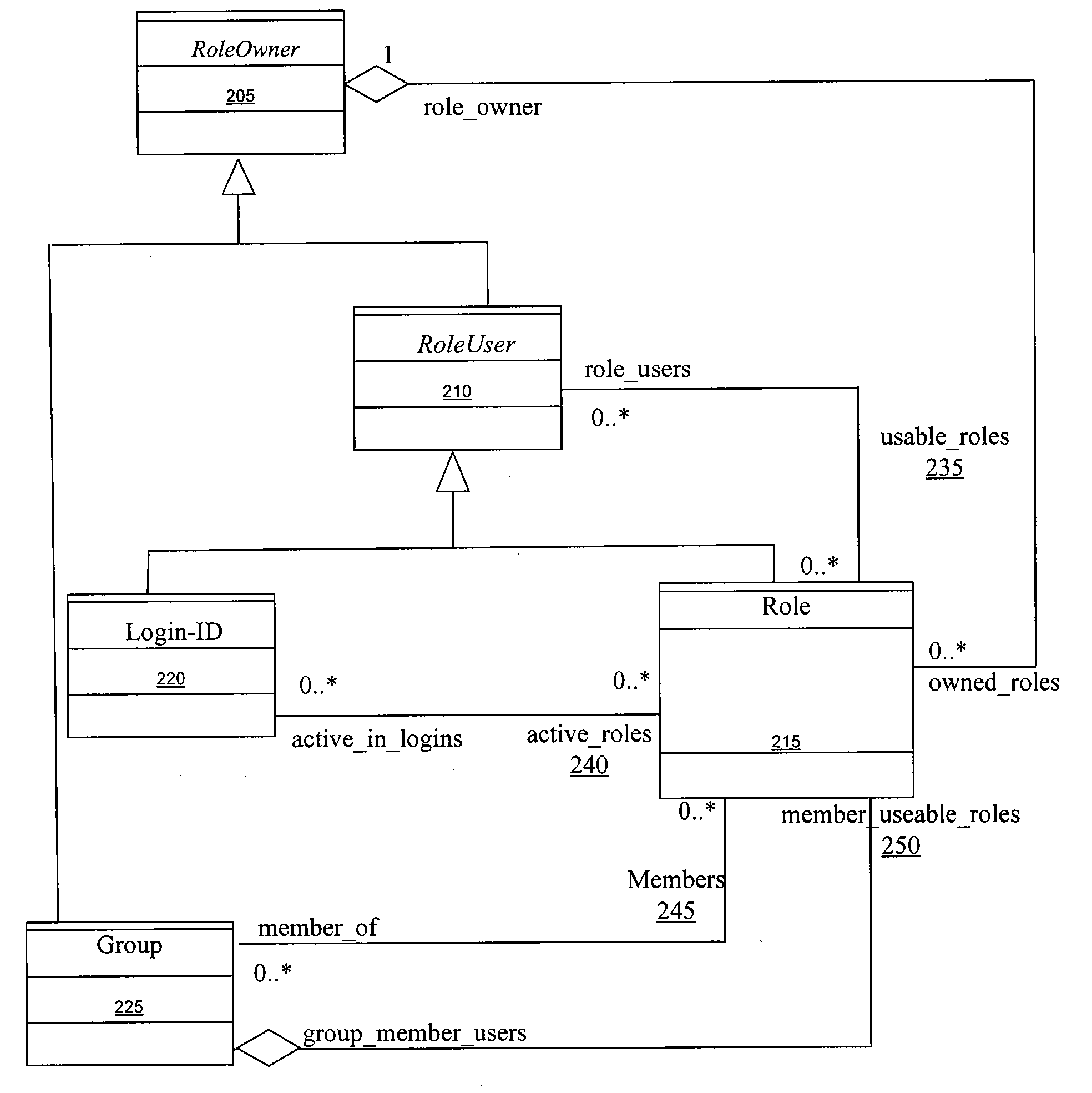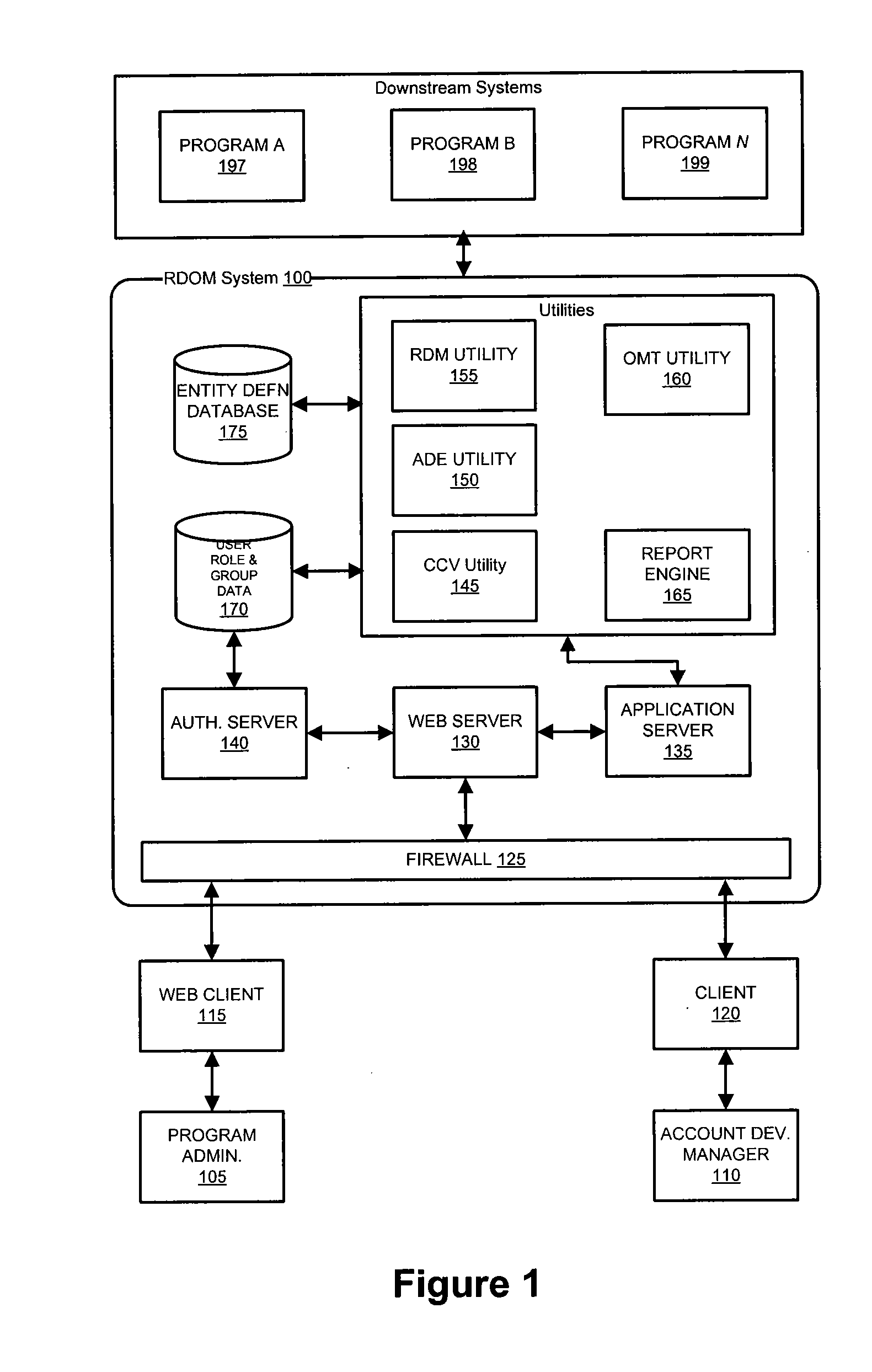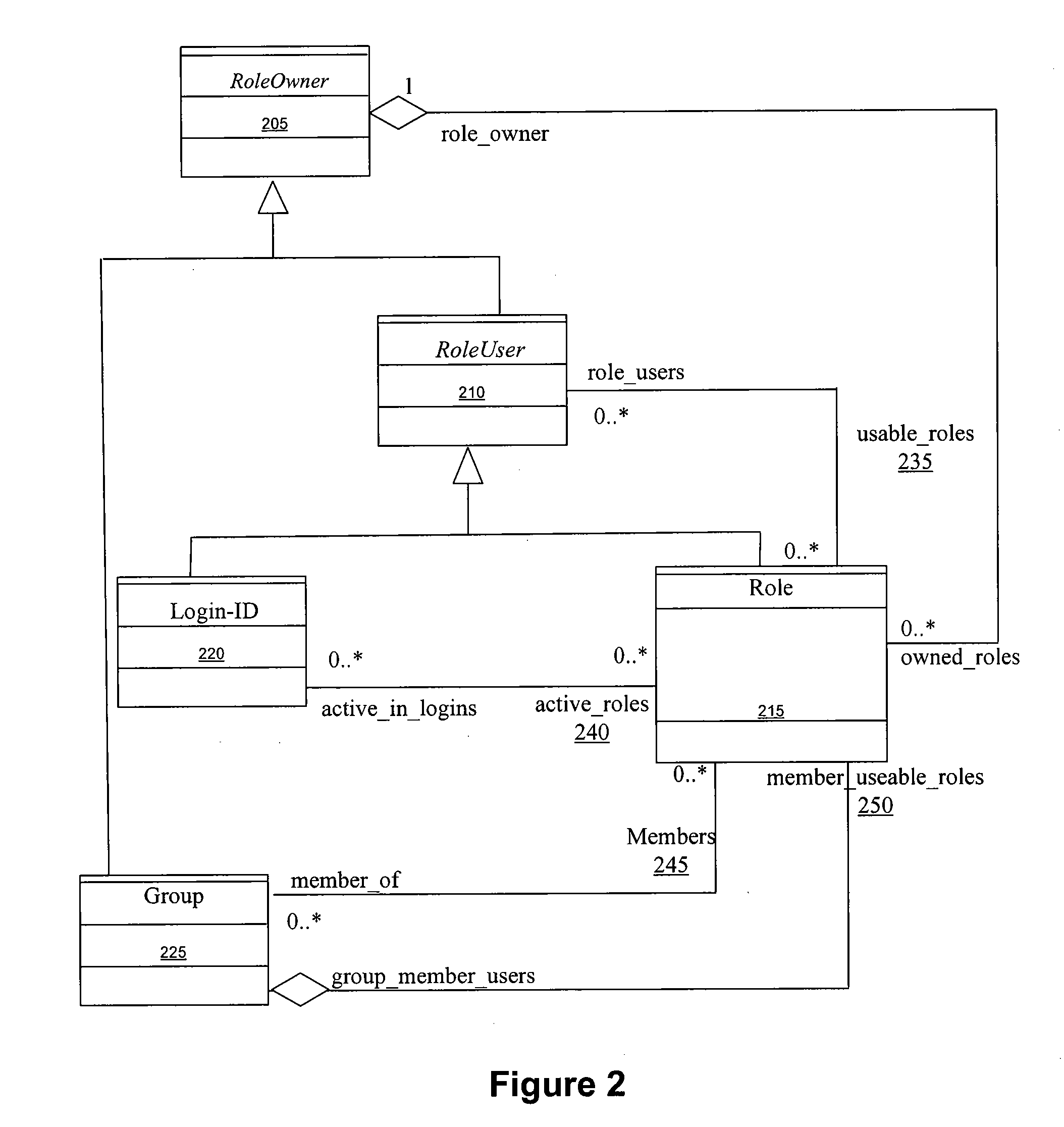[0009]The invention includes a system and method for defining and manipulating Roles, along with the relationship of the Roles to Login-IDs or Groups in a computing environment. In an exemplary embodiment, the components of the invention include a Role definition and maintenance utility, an attribute configuration and maintenance utility, a permissions evaluation module and an organizational modeling tool. The system defines a class structure for structuring the Entities of the system and representing the relationships between the Entities. This
object oriented design provides maximum flexibility and enables the complex relationships of an organization to be represented in the system.
[0010]With respect to the utility for defining and maintaining Roles, an exemplary utility allows the appropriate user to create a Role, assign an owner to the Role, grant or revoke Role usage, delete a Role, delete a Role owner, change Role ownership, transfer Role ownership, change a Role attribute, activate or deactivate a Role usage, along with adding or removing a Role to a Group, a user or another Role. The program administrator may initially create a Role and define the owner. The Role owner may further define the Role and its remaining attributes and enable other Entities in the system to use the capabilities of the Role. In another embodiment, the Role owner delegates Role definition and maintenance to another user in the system and maintains approval authority over certain types of maintenance functions performed on the Role. The owner of a Role may also transfer ownership of the Role to another user in the system either permanently or temporarily.
[0011]The defined Roles enable the system to make decisions based upon the value of an attribute. A Role typically includes many attributes. An attribute may be as simple as a typical characteristic, such as a person's birth date, or as complex as a computation based upon dynamic variables. The attribute definition and evaluation utility enables the authorized user to define attributes, along with the values, functions and rules associated with each attribute. The complex organization and relationships enabled by other utilities in the system allow a user to be a member of many Groups, Roles, sub-Groups and sub-Roles. Therefore, a particular user's permission to perform a task in a system may be, for example, a function of numerous attributes from a multitude of different Roles the user is authorized to use. In this regard, the evaluation utility allows an authorized user to establish sophisticated permission evaluation methods based upon multiple inputs. Using a permission evaluation, the system resolves permission conflicts that may arise from an Entity being associated with multiple Roles. Calculations can be as simple as a comparison of the values of the input parameters, or as complex as calculating a composite attribute based upon the individual input attributes.
[0012]The organizational modeling tool models the complex relationships of real-world organizations. Even the most basic organizations have many structures that are typically defined and maintained. Examples of such structures include hierarchical structure; functional structure; reporting relationships and roll ups; and
authorization and approval workflows. Each Entity within such structures may have a unique membership, system capabilities and interrelationships with other Entities. This tool leverages the flexibility afforded by the decoupling of Roles from the user and Group objects, while mitigating the complexity inherent in the abstract
data model which implements Roles. The organizational modeling tool provides the responsible personnel of any organization with the ability to model, implement and maintain organizational structures and relationships.
 Login to View More
Login to View More  Login to View More
Login to View More 


